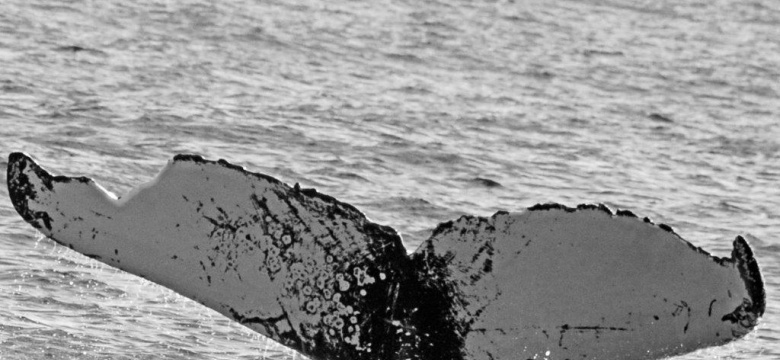
The Department of Environment and Natural Resources is receiving an increasing number of reports about people entering the water to swim with the whales. It is strongly recommended that members of the public do NOT swim with any whales, no matter how docile they may appear, as they are wild animals and can be unpredictable, especially if disturbed.
"Mid-March through April are the peak weeks for humpback whales to be spotted around Bermuda," explained Senior Marine Conservation Officer Sarah Manuel. "They swim through our waters on their journey from their breeding grounds in the Caribbean to their feeding grounds on the eastern seaboard of North America, and for some as far north as Greenland and Iceland.
"Watching these majestic animals, spouting, breaching or swimming along slowly with a calf is a thrilling experience. While well-meaning boaters and swimmers may not intend to be intrusive, getting too close to the whales can actually disrupt feeding, nursing and migrating behaviors, and boats, in particular, can cause unintended injuries to the whale. Furthermore, while it might be very tempting to get up close and even get in the water with these amazing animals, they are wild animals and can be unpredictable, particularly if perturbed."
It is an offense under the Protected Species Act 2003 to disturb or harass a humpback whale. If a whale tries to leave the area, do not chase it. Behavior that indicates the whale is agitated or no longer interested in staying near a vessel may include:
• Regular changes in travelling direction or speed of swimming.
• Hasty dives.
• Changes in respiration patterns.
• Increased time spent diving compared to time spent at the surface.
• Changes in acoustic behavior.
• Certain surface behaviors such as tail slapping or trumpet blows.
• Repetitive diving.
To ensure the safety of the boating public while they watch the whales, and to minimize the disturbance caused by whale watchers, the Department of Environment and Natural Resources has developed guidelines for whale watching which are available at https://environment.bm/whale-watching-guidelines. The department asks that members of the public familiarize themselves with these guidelines prior to going whale watching.
The accompnaying photo was taken in Bermuda by Andrew Stevenson which depicts a whale with severe propeller scars from boats.
